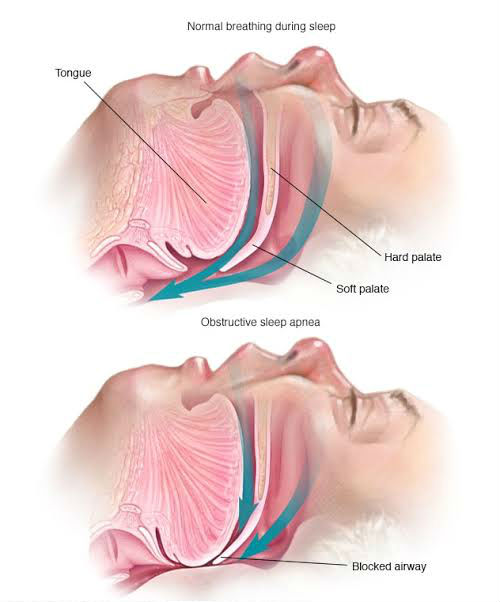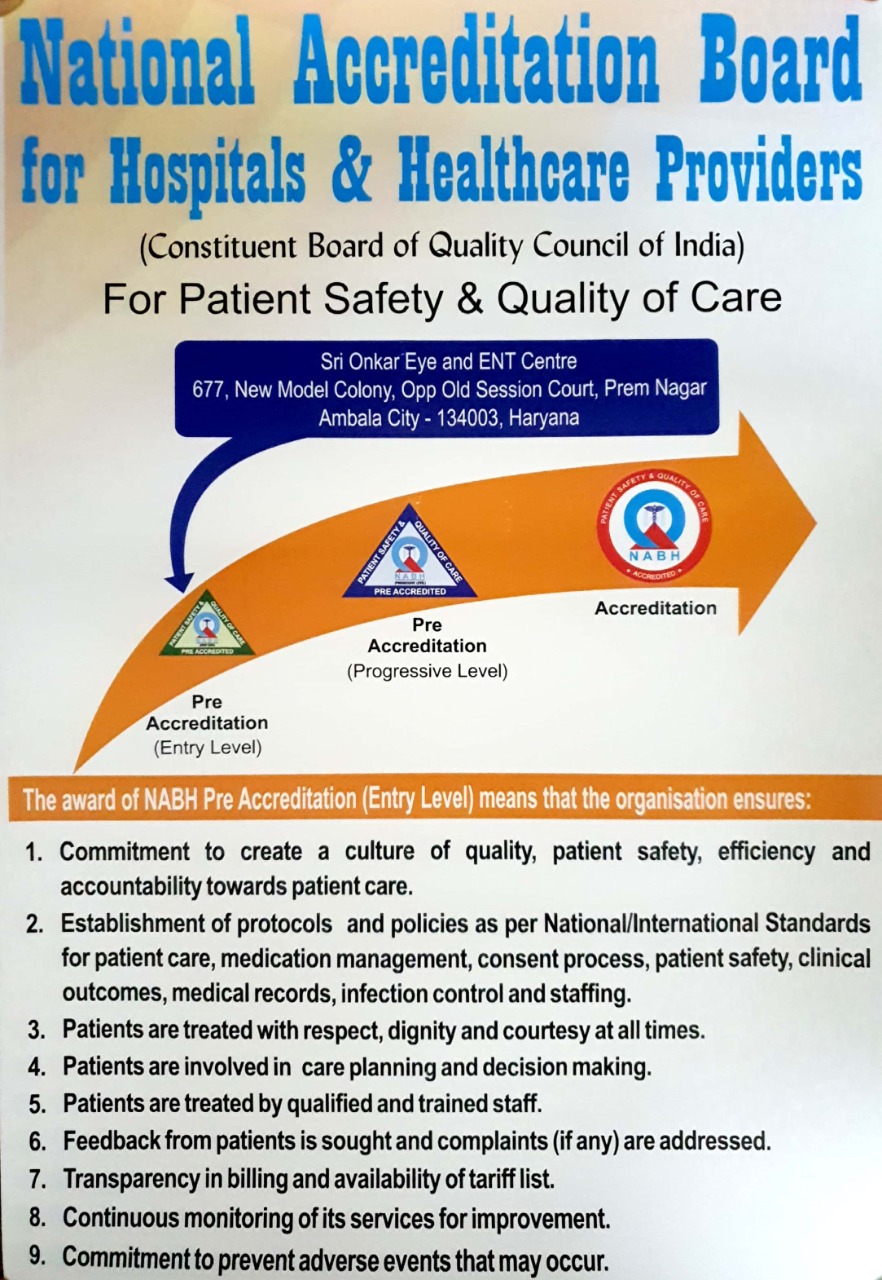OVERVIEW
Snoring Causes And Treatment. Snoring is noisy breathing during sleep that happens when tissue vibrates in the upper airway. It is a common problem that affects most people at some time during their lives. Snoring can be cured with surgery. Sri Onkar Eye & ENT Care Centre is the only centre in Haryana to be doing snoring surgery. We do have most advanced Coblation technique for snoring surgery.
Why there is difficulty in sleeping because of snoring?
When you sleep, all of the muscles in your body become more relaxed. This includes the muscles that help keep your throat open so air can flow into your lungs.
Normally, your throat remains open enough during sleep to let air pass by. Some people have a narrow throat. When the muscles in their upper throat relax during sleep, the tissues close in and block the airway. This stop in breathing is called apnea.
Loud snoring is a telltale symptom of OSA. Snoring is caused by air squeezing through the narrowed or blocked airway. Not everyone who snores has sleep apnea though.
At Sri Onkar Eye & ENT Care Centre we educate patient about Snoring Causes And Treatment. Though people try to do Snoring treatment at home. But it generally does not work and patient reach to a condition where the problem become more complicated. So we should not take snoring lightly and we should understand Snoring Causes And Treatment options very seriously.

- A lower jaw that is short compared to your upper jaw
- Certain shapes of the roof of your mouth (palate) or airway that cause it to collapse more easily
- Large neck or collar size, 17 inches (43 centimeters) or more in men and 16 inches (41 centimeters) or more in women
- Large tongue, which may fall back and block the airway
- Obesity
- Large tonsils and adenoids that can block the airway
- Sleeping on your back can also cause your airway to become blocked or narrowed.
- Central sleep apnea is another sleep disorder during which breathing can stop. It occurs when the brain temporarily stops sending signals to the muscles that control breathing.
If you have OSA(Obstructive Sleep Apnea), you usually begin snoring heavily soon after falling asleep.
- The snoring often becomes very loud.
- Snoring is interrupted by a long silent period while your breathing stops.
- The silence is followed by a loud snort and gasp, as you attempt to breathe.
- This pattern repeats throughout the night.
Most people with OSA do not know their breathing starts and stops during the night. Usually, a sleep partner or other family members hear the loud snoring, gasping, and snorting. Snoring can be loud enough to hear through walls. Sometimes, people with OSA wake up gasping for air.
People with sleep apnea may:
- Wake up unrefreshed in the morning
- Feel sleepy or drowsy throughout the day
- Act grumpy, impatient, or irritable
- Be forgetful
- Fall asleep while working, reading, or watching TV
- Feel sleepy while driving or even fall asleep while driving
- Have hard-to-treat headaches
Surgery may be an option for some people. It is often a last resort if other treatments did not work and you have severe symptoms. Surgery may be used to:
- Remove extra tissue at the back of the throat.
- Correct problems with the structures in the face.
- Create an opening in the windpipe to bypass the blocked airway if there are physical problems.
- Remove the tonsils and adenoids.
Treatment
Treatment helps keep your airway open while you sleep so your breathing does not stop.
Lifestyle changes may help relieve symptoms in people with mild sleep apnea, such as:
- Avoid alcohol or medicines that make you sleepy before bedtime. They can make symptoms worse.
- Avoid sleeping on your back.
- Lose excess weight.
Continuous positive airway pressure (CPAP) devices work best to treat obstructive sleep apnea in most people.
- You wear a mask over your nose or over your nose and mouth while you sleep.
- The mask is connected by a hose to a small machine that sits at the side of your bed.
- The machine pumps air under pressure through the hose and mask and into your airway while you sleep. This helps keep your airway open.
Surgery may be an option for some people. It is often a last resort if other treatments did not work and you have severe symptoms. Surgery may be used to:
- Remove extra tissue at the back of the throat.
- Correct problems with the structures in the face.
- Create an opening in the windpipe to bypass the blocked airway if there are physical problems.
- Remove the tonsils and adenoids.
Snoring Treatment in Haryana
Sri Onkar Eye & ENT Care Centre is the only centre in Haryana to be doing snoring surgery. We do have most advanced Coblation technique for snoring surgery.
- Treatment for Snoring and Sleep Apnea In Ambala
- Best ENT doctor in Ambala
- Ear Pain Treatment In Ambala
- Mastoiditis Treatment In Ambala
- Ear Infections Treatment in Ambala
- Ear Wax Removal In Ambala
- Vertigo Treatment In Ambala
- Ototoxicity Treatment In Ambala
- Hearing loss Treatment in Ambala
- Serous Otitis Media Treatment In Ambala
- Torn Ear Lobes Treatment in Ambala
- Vertigo Specialist in Ambala
- Perforation In Ear Treatment in Ambala
- Ear Cholesteatoma Treatment In Ambala
- Foreign bodies in the ear treatment in Ambala


